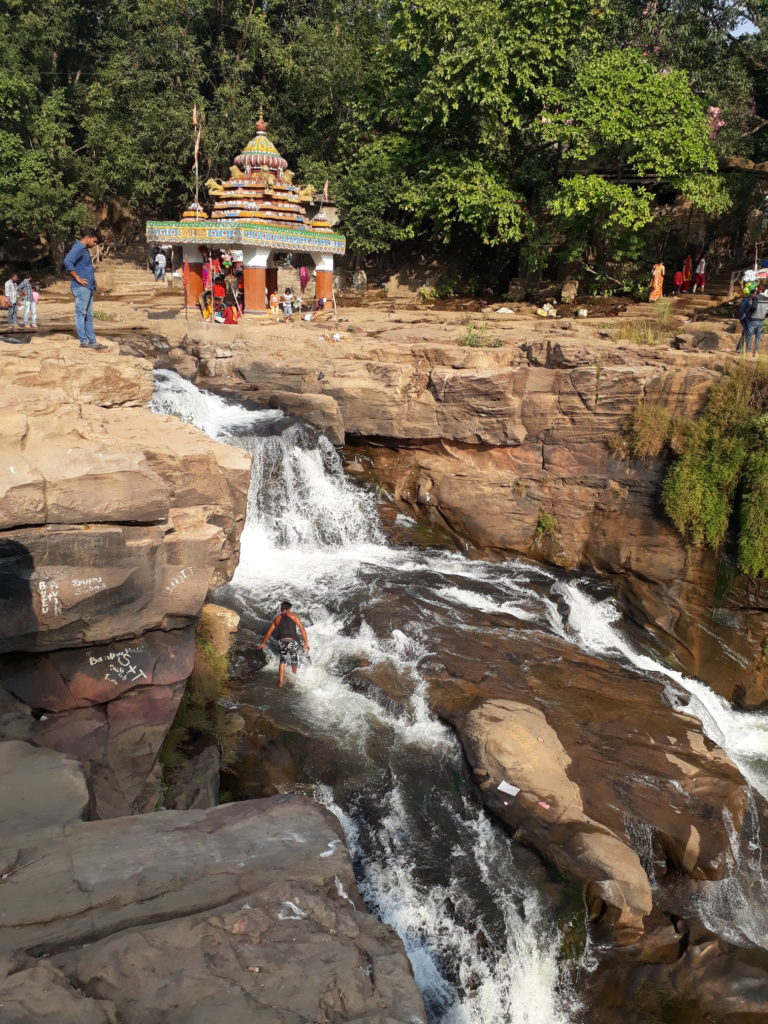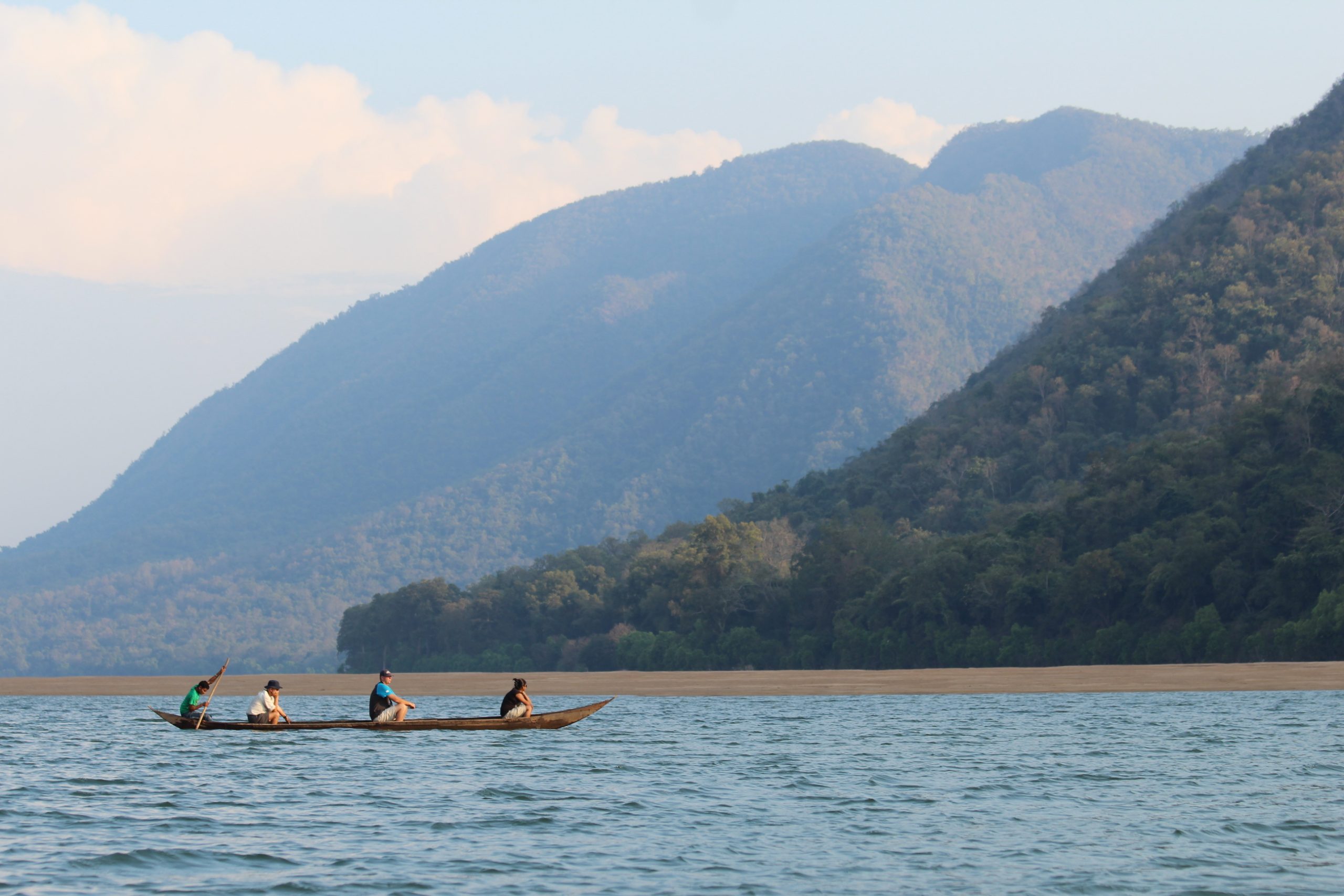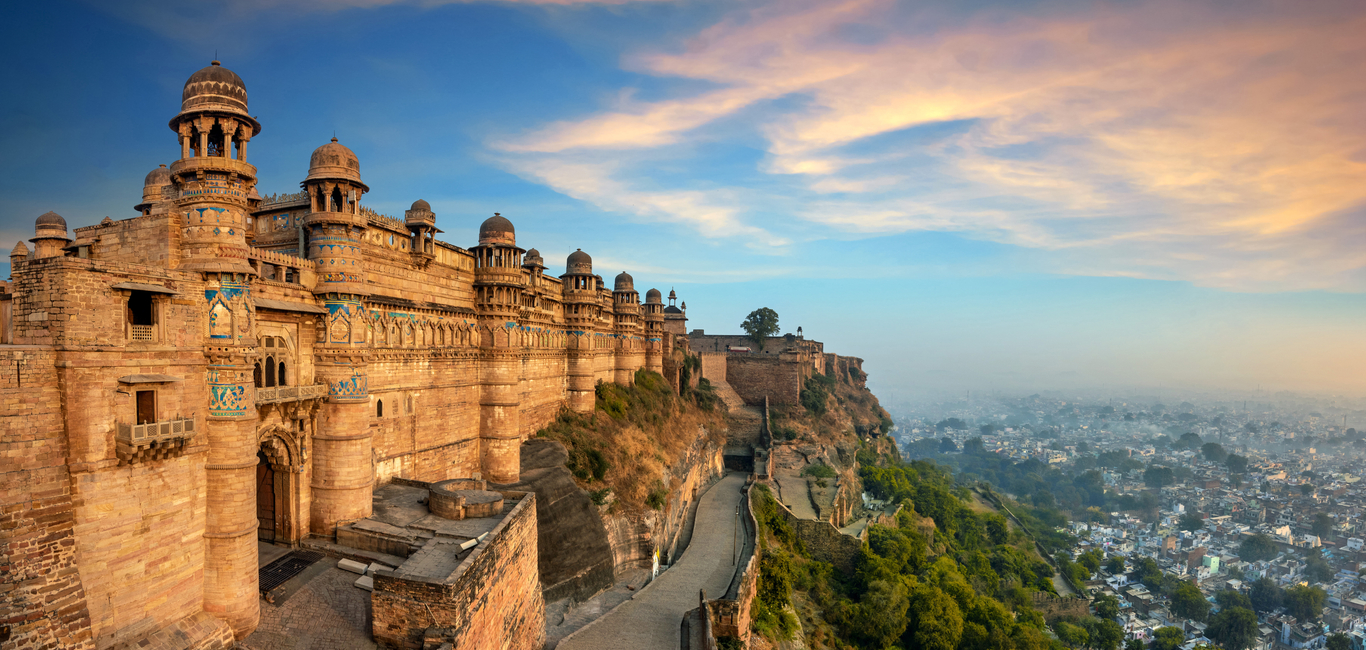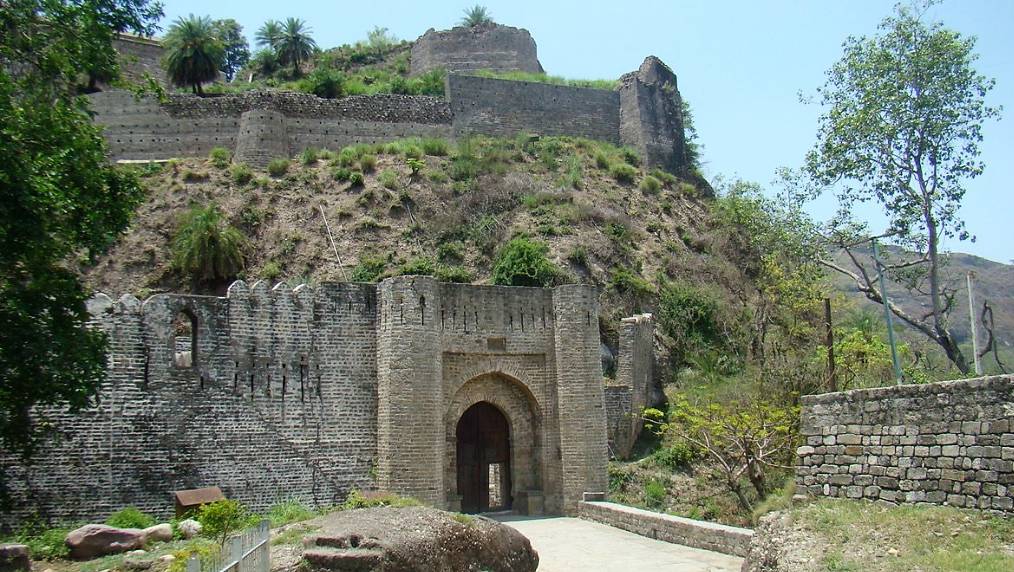The northern watershed feeds numerous rivers, but the most significant in terms of volume and relevance are the big four that comprise the Ganges, Brahmaputra, Indus (a small part of which flows through India) and Mahanadi -one of the most important rivers of central India and Orissa. Unfortunately, this river is associated with wanton destruction. While the Mahanadi continues to be infamous for its annual floods, its gory association with the Kalinga war has tainted it eternally. So distraught was Emperor Ashoka by the carnage, that he embraced Buddhism in search of consolation.
 The river, once renowned for its legendary span has been reduced to a narrow rivulet in its middle course due to large dams and sedimentation. In the dry season, navigating the shallow Mahanadi by boat is difficult and one can safely walk across its fords. The silting also makes the delta exceptionally fertile. If sufficient resources were committed to the estuarine region of the Mahanadi, Orissa would be one of the richest states in eastern India.
The river, once renowned for its legendary span has been reduced to a narrow rivulet in its middle course due to large dams and sedimentation. In the dry season, navigating the shallow Mahanadi by boat is difficult and one can safely walk across its fords. The silting also makes the delta exceptionally fertile. If sufficient resources were committed to the estuarine region of the Mahanadi, Orissa would be one of the richest states in eastern India.
The Mahanadi that is otherwise timid and impotent proves its might during the monsoon. The river has an estimated drainage area of 82,000 sq km and plays a primary role in the agrarian economy of the region. The Tel (a tributary of the Mahanadi) and the Mahanadi basins in the Sambalpur and Bolangir districts, together with the Brahmani and Baitarani basins, constitute one of the most fertile regions of India. The area it irrigates is so vast that it has been adjudged the second-largest wetland in Southeast Asia. The Mahanadi that discharges only 40 cubic meters of water per second in the dry months (often leading to drought-like conditions) carries 1, 17,000 cubic meters in the rainy season. If not for the Hirakud Dam near Sambalpur and the earthen barrage at Naraj, the destruction due to flooding in the middle and lower reaches of the river would be enormous.
The literal meaning of ‘Mahanadi’ is ‘Great River’ and at almost 900 km, it is no less than its name suggests. It is the only major northern river that lacks a perennial snow-fed source. Its mythical source which is also its point of origin is a hillock in the wild, mountainous region of Bastar in the Sihawadistrict of Chhattisgarh (40 km south-east of Raipur).
The origin of the Mahanadi is attributed to an interesting legend. In the distant past, all the sages of this region decided to Visit the Mahakumbh for a holy dip. Maharishi Shringi, a famous sage who was also supposed to join the pilgrimage was meditating at the time and could not be roused. After waiting for a few days, the other sages decided to continue their pilgrimage without him but decided to bring him a gift of holy water. When they returned, the Maharishi was still in a deep trance. Not wanting to disturb him, the sages filled his kamandalam with sacred water before returning to their respective hermitages. When the Maharishi finally ended his meditation, he wanted to stretch. By a careless stroke of his hand, some water from the kamandalam spilled onto the ground and began to flow in an eastwardly direction. This stream eventually became a river, which came to be known as the Mahanadi.
The Mahanadi’s geographical origins are also quite obscure. Atop a hillock in the Sihawa district of Chhattisgarh, a hermitage associated with Maharishi Shringi exists alongside the feeble proof of the river’s mythical origin. A tiny well, the circumference of which is less than a foot, is alleged to be the source of the river and the resident hermit of the ashram happily conforms to this.
The Mahanadi disappears underground here, before emerging again as a small stream that flows through the eastern parts of Chhattisgarh. Its first big tributary, the Seonath, is above the town of Seonarayan. It continues to flow eastward, gradually increasing in volume as more tributaries join it from the hill ranges between Chhota Nagpur and Sambalpur. The river enters Orissa at Hirakud (near Sambalpur) where it is dammed. At Padampur, it earns South and struggles past huge boulders on its way towards Sonepur. From here, it cuts through the hills, before descending into the lovely Satkosia Gorge at Tikarpara. This 22 km gorge flanked by forested slopes is famous for its cascading mountain streams and rapids and is popular with wildlife enthusiasts. The river runs through a thick deciduous forest that supports a variety of flora and fauna; a crocodile breeding center has been established1 here to reintroduce the Gharial into the Mahanadi’s riverine ecosystem.
From Tikarpara, the river flows towards the city of Cuttack that is flanked by the Mahanadi and its tributary, the Kathajodi. Cuttack was established in 989 AD and hence is also called the ‘millennium city. It was the capital of Orissa for almost ten centuries. In 1948, when the capital was shifted to Bhubaneswar, its importance remained undiluted and it retained its position as the administrative headquarters of Orissa. A walk along the banks of the Mahanadi unfolds Cuttack’s rich historical tapestry. The Barabati Fort built by the Ganga kings in the 14th century is now n ruins, but the brilliance of the highly decorative Orissan style Of architecture is still evident. If you travel downstream, you can see the stone revetment that was constructed in the 11th century to protect the city from floods and the stone barrage at Narai: both continue to serve their purpose.
 The Mahanadi continues its journey through Orissa before it disembogues into the Bay of Bengal at a place called ‘False Point’, which has a rather peculiar relationship with ill-fortune. The position of False Point was considered ideal for trade, and efforts had been made to develop it into a seaport where ocean-bound steamers could dock. A harbor was built here about two hundred years ago. In 1815, a violent storm not only destroyed the port but also claimed several lives. The project was abandoned and today, Paradip near False Point serves as Orissa’s primary seaport. Although the legend of its origin is Puranic in nature, the Mahanadi’s diminutive religious connection has meant that very few festivals are associated with the river itself. While a sacred dip on the auspicious occasion of Mahashivratri is observed throughout the region, the only other noteworthy river festival is the Baliyatra, which means a journey to Bali’. It marks the day when Sadhabas (Oriya mariners) set sail to Bali, Java, Sumatra, Borneo, and Sri Lanka for purposes of trade and cultural expansion. The festival is celebrated during Kartik Purnima (October November) for five days just before the full moon. These traders sailed in large vessels called biotas; therefore, the festival is also known as Boita Bandana Utsav (festival of boats). To recapitulate this ancient tradition, most port towns in this belt observe an elaborate ceremony in which boats are worshipped. Seafarers and boatmen have always believed in omens and water deities to help them through their journeys. But there were also ancient navigational aids that often came to their rescue. Just south-west of Sambalpur, on the bank of the Mahanadi, is one such place that played an important role in ancient river navigation. Called a lighthouse without light’ the Ghanteshwari Temple is famous for the thousands of bells that are hung in long rows on every available branch and fence. Whenever the wind blew, the bells warned boatmen of the treacherous spot near the temple, where three streams of the Mahanadi met, creating a giant whirlpool. Following the construction of the Hirakud Dam, this stretch does not pose any further danger.
The Mahanadi continues its journey through Orissa before it disembogues into the Bay of Bengal at a place called ‘False Point’, which has a rather peculiar relationship with ill-fortune. The position of False Point was considered ideal for trade, and efforts had been made to develop it into a seaport where ocean-bound steamers could dock. A harbor was built here about two hundred years ago. In 1815, a violent storm not only destroyed the port but also claimed several lives. The project was abandoned and today, Paradip near False Point serves as Orissa’s primary seaport. Although the legend of its origin is Puranic in nature, the Mahanadi’s diminutive religious connection has meant that very few festivals are associated with the river itself. While a sacred dip on the auspicious occasion of Mahashivratri is observed throughout the region, the only other noteworthy river festival is the Baliyatra, which means a journey to Bali’. It marks the day when Sadhabas (Oriya mariners) set sail to Bali, Java, Sumatra, Borneo, and Sri Lanka for purposes of trade and cultural expansion. The festival is celebrated during Kartik Purnima (October November) for five days just before the full moon. These traders sailed in large vessels called biotas; therefore, the festival is also known as Boita Bandana Utsav (festival of boats). To recapitulate this ancient tradition, most port towns in this belt observe an elaborate ceremony in which boats are worshipped. Seafarers and boatmen have always believed in omens and water deities to help them through their journeys. But there were also ancient navigational aids that often came to their rescue. Just south-west of Sambalpur, on the bank of the Mahanadi, is one such place that played an important role in ancient river navigation. Called a lighthouse without light’ the Ghanteshwari Temple is famous for the thousands of bells that are hung in long rows on every available branch and fence. Whenever the wind blew, the bells warned boatmen of the treacherous spot near the temple, where three streams of the Mahanadi met, creating a giant whirlpool. Following the construction of the Hirakud Dam, this stretch does not pose any further danger.
In striking contrast to the other northern rivers, the Mahanadi has been rather shy of religious association, but specimens of religious architecture can still be found in the temple towns of Rajim, Sirpur (Chhattisgarh) and Sambalpur. Of these, Huma near Sambalpur is famous for its leaning shrines. Nobody knows the true reason behind this, but there is an interesting myth about the temple’s origins. The worship of Shiva (the main deity) is said to have been initiated by a cowherd. One of his cows would go into the jungle every day and return without milk. The bewildered cowherd followed the cow one day and was amazed to find the animal standing over black rock, spraying it with milk. It did not take this cowherd long to realize that the rock was a Shivalinga and he began to worship it every day. It is alleged that the original temple was built around this Shivalinga. The tame Kodo fish that live in shallow pools along the river eat out of the pilgrims’ hands and many locals make their living selling fish feed. These fish are never caught or eaten as they are believed to be sacred.
After Sambalpur and Cuttack, the river flows through picturesque agricultural villages before entering Paradip, where the entire scenery changes. Chimneys of petrochemical units and dock cranes rise from the landscape like alien figures. The fresh air of rural India is replaced by a thick blanket of chemical smog that hangs low. Although a part of Paradip is highly developed, the other side comprises of virgin beaches. Charming fishing villages with their traditional way of life compete with the burgeoning needs of an industrialized township. Urbanization is gradually intruding into their lifestyle and effluents are slowly poisoning the sea on which this fisherfolk depends. Brave men in their tiny fishing boats are often seen battling the elements. With only a prayer on their lips to guide them home and the fond hope of a good catch, they have preserved their tradition for centuries. However, this might soon be a thing of the past, for if the levels of pollution increase, this community might become extinct. If the carcasses of giant sea turtles and the drastic fall in catches are any indication, the first signs of impending doom are already quite visible.




